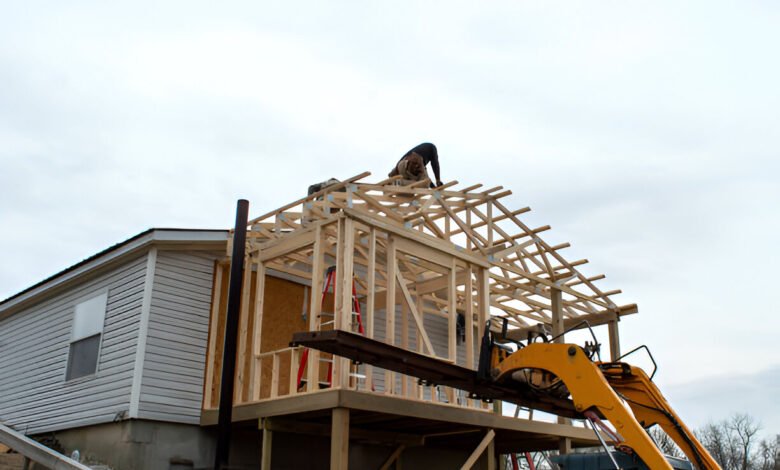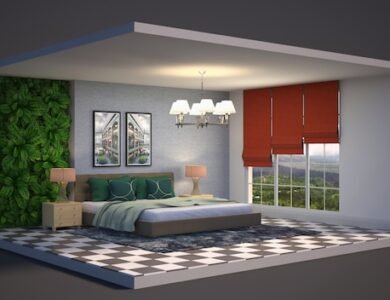The Impact of Natural Light on Home Remodeling Choices

Natural light has become one of the most sought-after features in modern homes. As homeowners increasingly prioritize well-being, energy efficiency, and aesthetics, the role of natural light in home remodeling decisions has taken center stage. Whether you’re redesigning a single room or planning a whole-house renovation, considering how natural light interacts with your space can significantly influence your choices.
In this article, we’ll explore the profound impact of natural light on home remodeling and why it’s essential to maximize this free, renewable resource in your design plans.
Natural Light and Home Aesthetics
One of the most noticeable effects of natural light in home remodeling is its ability to enhance the visual appeal of a space. Natural light adds warmth, vibrancy, and dimension to a room, making it feel more inviting and spacious. Rooms that are filled with sunlight often appear larger, brighter, and more welcoming than those relying solely on artificial lighting.
When planning your remodel, consider how the orientation of your home and the placement of windows will allow natural light to flow through key areas such as living rooms, kitchens, and dining spaces. Expansive windows, skylights, and glass doors can all be integrated into your home remodeling project to maximize the amount of daylight entering your home.
The beauty of natural light is its ability to transform a space. For example, sunlight filtering through sheer curtains can cast soft, diffused light that adds an element of calm, while larger, unobstructed windows can create dramatic brightness. Tailoring your light sources to match the mood you wish to create is an important aspect of modern home remodeling.
Natural Light and Energy Efficiency
Incorporating natural light into home remodeling isn’t just about aesthetics; it’s also a smart, energy-efficient choice. With the cost of electricity on the rise and increased awareness of environmental sustainability, homeowners are looking for ways to reduce energy consumption. By maximizing natural light, you can decrease your reliance on artificial lighting, significantly lowering your energy bills.
Strategically placed windows and skylights can provide enough light to brighten up your home for most of the day. A well-designed remodel can use natural light to illuminate spaces so efficiently that artificial lights are only needed after the sun sets. Moreover, sunlight naturally warms your home during cooler months, helping to reduce heating costs as well.
When embarking on a home remodeling project, it’s important to work with professionals who understand the balance between natural light and energy efficiency. Choosing energy-efficient windows, for instance, can help regulate indoor temperatures while still allowing plenty of daylight to stream in. Pairing natural light with modern technologies such as smart blinds or insulated windows can further enhance energy savings.
Psychological Benefits of Natural Light
Beyond its visual and energy-saving benefits, natural light also has a positive impact on mental and emotional well-being. Numerous studies have shown that exposure to natural light boosts mood, improves focus, and increases productivity. Sunlight helps regulate the body’s circadian rhythm, which is essential for maintaining healthy sleep patterns. In this context, home remodeling choices that prioritize natural light can contribute to a healthier, happier living environment.
In rooms where relaxation and mental clarity are vital—such as home offices, reading nooks, or meditation spaces—natural light can play a transformative role. A well-lit environment can reduce stress and fatigue, enhance cognitive function, and promote a sense of calm and well-being.
For those looking to create a space that fosters mindfulness and balance, integrating practices like Reiki Healing Online can further complement the benefits of natural light. By designing spaces that encourage relaxation and emotional balance, homeowners can create an environment that nurtures both body and mind.
Maximizing Natural Light in Kitchens and Bathrooms
Kitchens and bathrooms are two of the most frequently used spaces in any home, making them prime candidates for integrating natural light into home remodeling projects. These areas are often where bright, clear lighting is essential for tasks such as cooking, grooming, or cleaning. Incorporating natural light into these rooms not only improves functionality but also enhances their aesthetic appeal.
In the kitchen, consider installing large windows above sinks or countertops to flood the room with light during the day. Skylights can be another excellent option for adding overhead light to kitchen spaces, making them feel open and airy. When it comes to choosing materials for your kitchen remodel, lighter-colored surfaces like quartz countertops or white cabinetry can reflect natural light, amplifying its effect.
Bathrooms, often considered private and enclosed spaces, can also benefit greatly from natural light. Strategically placed windows or frosted glass can offer privacy while allowing sunlight to brighten the room. Incorporating natural light into your bathroom remodel not only enhances its visual appeal but can also reduce the need for artificial lighting during the day.
Consulting with kitchen and bath remodeling contractors can help you make informed decisions about window placement, material selection, and design options to optimize the use of natural light in these key areas of your home.
Designing Multi-Functional Spaces with Natural Light
With the rise of multi-functional spaces in modern homes, natural light is becoming a critical component in creating flexible and versatile environments. In home remodeling, spaces such as home offices that double as guest rooms, or living rooms that serve as work-from-home hubs benefit significantly from well-placed windows that allow natural light to flow freely.
For example, in a home office, large windows or glass doors can help create a bright, productive workspace during the day while contributing to a more relaxing ambiance in the evening. Adding adjustable window treatments like blinds or curtains allows you to control the intensity of the light, adapting the space to your specific needs throughout the day.
The thoughtful integration of natural light into multi-functional spaces can elevate their design, making them not only more beautiful but also more functional for everyday living.
Role of Skylights and Sun Tunnels
When traditional windows aren’t feasible due to structural limitations, skylights and sun tunnels offer an innovative solution. Skylights are a great way to introduce daylight into upper floors or rooms with limited wall space, while sun tunnels can bring light into areas like hallways, closets, or windowless bathrooms.
Incorporating skylights into home remodeling projects can make a significant difference in the overall ambiance of a space. In addition to providing natural light, skylights offer a view of the sky, adding an extra layer of openness and tranquility. Sun tunnels, which use reflective tubes to direct sunlight into dark spaces, are an effective option for areas where traditional skylights aren’t practical.
Natural Light and the Future
As the demand for sustainable and wellness-focused living continues to grow, natural light will remain a central element in home remodeling. Homeowners are recognizing that by incorporating more daylight into their homes, they are not only enhancing aesthetics and reducing energy consumption but also creating environments that promote better physical and emotional health.
Whether through expansive windows, skylights, or smart lighting design, the use of natural light in home renovations represents a significant trend that’s shaping the future of architecture and interior design. By making strategic remodeling choices that prioritize daylight, homeowners can enjoy a brighter, more energy-efficient, and mentally uplifting space for years to come.






